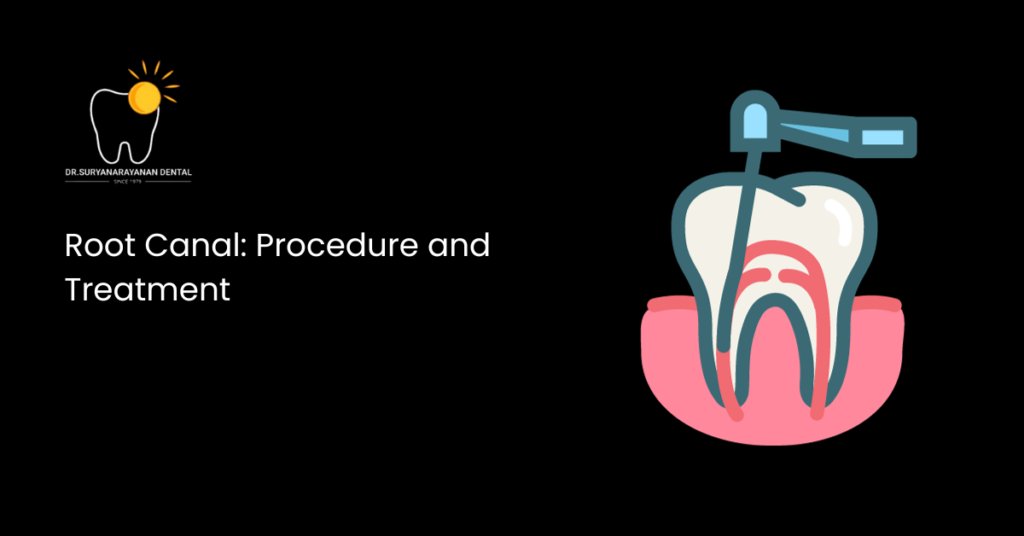Root canal therapy is an alternative to tooth extraction and can save or preserve an infected tooth.
What is root canal treatment?
Root canal treatment is a dental operation that is performed to save a badly decaying or infected tooth. It can relieve pain, improve oral health, and keep your natural smile intact.
What makes Root Canal Treatment necessary?
When the inner pulp of a tooth, which is made up of connective tissue, blood vessels, and neurons, becomes infected or injured as a result of severe decay, cracks, or trauma, it can cause terrible pain and even lead to the formation of an abscess. Root canal treatment helps clear up this infection.
Procedure of Root Canal Treatment
The following are the stages of the root canal procedure:
Examination and Diagnosis
The first step in the process is to have a dentist or endodontist do a comprehensive evaluation. They will evaluate your indications and symptoms, as well as your medical history, and they may take X-rays in order to diagnose the level of damage and establish whether or not a root canal is required.
Anaesthesia
Before beginning the procedure, the dentist will numb the area around the problematic tooth, as well as the tooth itself, with local anesthesia. Because of this, you won’t experience any discomfort throughout the procedure.
Isolation
Isolation involves placing a rubber dam or a protective sheet over the tooth in order to keep it dry and free of saliva while the process is being performed. This contributes to the upkeep of a sanitary atmosphere.
Access Opening
The pulp chamber and root canals can only be reached when the dentist makes a small hole in the crown of the tooth, which is called the access opening. This opening creates a passageway that can be used for disinfecting and treating the diseased region.
Pulp Removal
With the aid of specialized dental instruments, the dentist will remove the infected or damaged pulp tissue from the pulp chamber and root canals. This process is known as “pulp removal.” This treatment will remove the cause of the infection as well as the pain.
Cleaning and Shaping
Before beginning the shaping process, the dentist will clean the inside of the tooth, including the root canals, using a variety of devices. In addition to this, they will form the channels to guarantee that they are clean and devoid of dirt as well as bacteria.
You can also read: The Importance of Oral Hygiene
Disinfection
After the canals have been cleansed, they are disinfected in great detail in order to kill any germs or infections that may have remained. This helps prevent the sickness from spreading even further.
Filling the canals
After the canals have been cleansed and disinfected, they are next filled with a biocompatible gutta-percha material. This step occurs after the canals have been cleaned. This material stops any more infection from entering the canals by sealing them off.
Sealing
The access aperture that was made in the crown of the tooth is closed with a substance that can either be temporary or permanent,depending on the situation.
Restoration
Depending on the severity of the damage to the tooth, a dental crown may be placed over the tooth in order to protect and reinforce it once it has been restored. The tooth’s function and appearance can both be restored with a crown.
In the follow-up, the doctor may recommend that you take antibiotics to get rid of the infection after the procedure. In addition, you will be given post-procedure care instructions to carry out as directed.
Conclusion
If you’re in need of a dentist, come see our talented, experienced dentists at Dr. Suryanarayanan Dental Clinic. We are dedicated to the safety and comfort of our patients, and we will do all in our power to ensure that the root canal surgery you undergo is completely painless. Call us at 098923 24580 to arrange an appointment to discuss root Canal Treatment in Goregaon West area of Mumbai, as well as other procedures such as dental implants.



